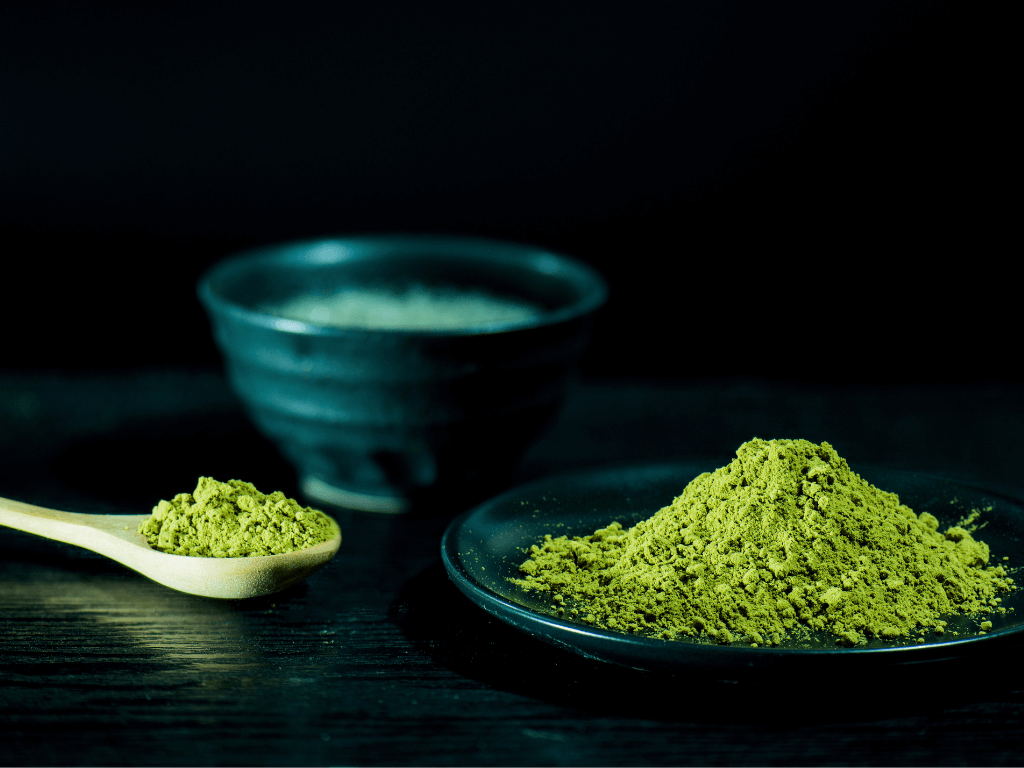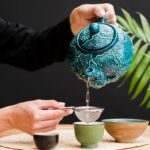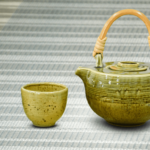Matcha Green Tea: History, Evolution, and Modern Uses

Matcha has seen a rise in global popularity in recent years, becoming a staple in cafés, kitchens, and wellness routines.
Known for its striking green color and earthy flavor, matcha is much more than a trend—it carries centuries of cultural heritage and ceremonial importance.
In this article, we’ll explore the history of matcha, its development in Japan, and how it continues to evolve in today’s world.
Origins of Matcha
The roots of matcha trace back to ancient China, during the Tang Dynasty (618–907 AD). At that time, tea leaves were steamed and compressed into cakes for easy transport.
These cakes were later crushed into powder and whisked into hot water—an early version of what we now know as matcha.
During the Song Dynasty (960–1279 AD), powdered tea became more widely consumed, especially among monks and scholars.
The practice of grinding tea leaves into fine powder and whisking it into water eventually inspired the development of chanoyu, the Japanese tea ceremony.
The Journey to Japan
In the late 12th century, Japanese Zen monk Eisai traveled to China to study Buddhism. Upon his return to Japan, he brought tea seeds and the powdered tea preparation method with him.
Initially, matcha was used primarily in Zen Buddhist temples, where monks drank it to maintain alertness and focus during long meditation sessions. Over time, the tea gained popularity beyond monastic circles and was adopted by the Japanese nobility and samurai class.
Development and Cultural Integration
During the Muromachi period (1336–1573), the foundation of the Japanese tea ceremony was established. The ceremony emphasized mindfulness, simplicity, and harmony—values that remain central to tea culture today.
By the Edo period (1603–1868), matcha had become an integral part of Japanese society. The cultivation methods were refined, including the now-standard practice of shade-growing the tea plants for several weeks before harvest. This technique increases the leaf's chlorophyll content and enhances its vivid green color and umami flavor.
Characteristics of Traditional Matcha
Shade-grown leaves (tencha) are hand-picked for quality.
Leaves are steamed to prevent oxidation.
After drying, stems and veins are removed before grinding.
The final powder is stone-ground slowly to preserve flavor and nutrients.
This meticulous process results in a tea that is both flavorful and deeply rooted in cultural tradition.
Matcha in the Modern World
In recent decades, matcha has gained widespread recognition across the globe. It’s commonly found in cafés, health food stores, and even bakeries, thanks to its versatility and vibrant appearance.
While traditional matcha is still enjoyed ceremonially, it's also widely used in:
Matcha lattes (with milk or plant-based alternatives)
Smoothies and protein shakes
Desserts such as cakes, ice cream, and cookies
Savory dishes, including sauces and marinades
Modern consumers appreciate matcha for its unique flavor and natural plant compounds. Since the whole leaf is consumed, matcha typically provides a more concentrated source of amino acids like L-theanine and naturally occurring antioxidants such as catechins, compared to steeped teas.
While not a medical product, matcha is often associated with:
Gentle energy without the jitteriness of coffee
Moments of calm and focus
Mindful preparation and enjoyment
These qualities contribute to its popularity as part of both wellness routines and culinary creativity.
Matcha Grades and How to Use Them
Matcha comes in different grades based on quality and intended use:
Ceremonial Grade
Made from the youngest, most tender leaves
Bright green color and smooth, sweet taste
Ideal for drinking on its own with hot water
Used in formal tea ceremonies
Culinary Grade
Slightly more robust and bitter flavor
Suitable for mixing into recipes
Often used in baking, lattes, and smoothies
More affordable and accessible for everyday use
When buying matcha, look for tea sourced from Japan, especially regions like Uji, Nishio, and Shizuoka, known for high-quality production.
Tips for Preparing Matcha at Home
To enjoy matcha in its traditional form, you’ll need:
A bamboo whisk (chasen)
A tea bowl (chawan)
A bamboo scoop (chashaku)
High-quality matcha powder
Steps to prepare:
Sift 1–2 grams of matcha into a bowl.
Add about 70–100 ml of hot water (not boiling—around 160–175°F / 70–80°C).
Whisk in a zigzag motion until a frothy layer forms.
Sip slowly and mindfully.
Alternatively, you can enjoy it in a latte, smoothie, or even sprinkle a bit into your yogurt or oatmeal.
Final Thoughts
From its origins in ancient China to its refinement in Japanese temples and its current place in modern cafés, matcha has stood the test of time. Its deep cultural roots, unique preparation, and wide range of uses make it a truly special tea.
Whether you're enjoying matcha in a serene tea ceremony or adding it to your favorite dessert, this vibrant green tea continues to bring tradition and innovation together in every cup.
Disclaimer: This article is for informational purposes only and does not provide medical or nutritional advice.
Leave a Reply



Related Posts